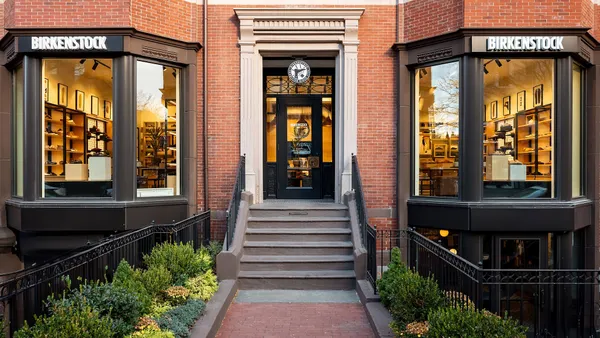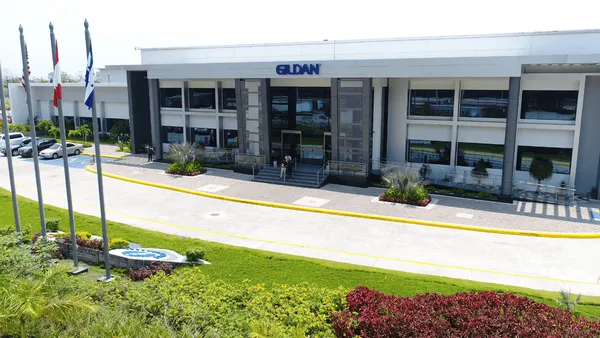Dive Brief:
- The Limited didn't have the most stores or make the most money, but its bankruptcy was the largest in 2017 in terms of its impact on an important part of the real estate investment market, according to a new report from data and investment analysis firm Trepp, which specializes in the market for commercial mortgage-backed securities (CMBS).
- Trepp found that more than $35 billion in CMBS debt is exposed to retailers that filed for bankruptcy protection this year. Commercial mortgage-backed securities typically bundle multiple commercial property loans of varying risk profiles into securities that can be sold to third parties. Analysts with Trepp note that because of declining mall traffic, "retail CMBS loans secured by regional malls and shopping centers are the groups most severely impacted by the recent rounds of retail bankruptcies and deserted department stores."
- The Limited topped Trepp’s rankings, with a total $14.7 billion of CMBS debt exposed to the mall retailer’s bankruptcy (i.e., through loans on malls that were home to a Limited store). After The Limited, the largest retail bankruptcies, in order of their CMBS debt exposure, were Toys R Us ($5.6 billion in CMBS debt), Gymboree, ($5.4 billion), Payless ShoeSource ($3.9 billion), RadioShack ($2.4 billion), hhgregg ($1.8 billion), rue21 ($1.7 billion), Gordman’s ($944.3 million), Gander Mountain ($432.6 million), MC Sports ($417.2 million) and BCBG ($164.9 million).
Dive Insight:
Retail bankruptcies do not happen in a vacuum. Store liquidation sales can bring down prices for everyone. The closing of a mall anchor can cast a pall over the entire property. Even the occasional closed storefront can be a bummer for a mall or retail strip.
And because retailers so often cast their lot together in a commercial development, the failure of a major retailer can put the whole property at risk. That’s a problem for retailers, landlords and the maze of investors that are betting on the property’s performance and mortgage.
"Looking ahead, most industry players are keeping their eyes peeled on mall loans," Trepp analysts write, noting that up to 15% of the existing mall supply is estimated to close or be re-purposed over the next decade, most of those properties being Class B and C malls.
And while retail bankruptcies make headlines and can hurt wide swaths of retail real estate in a short amount of time, they’re not the only threat. As the Trepp report notes, there were retailers that didn’t go bankrupt that also closed scores of stores this year. Among them were Macy’s, Sears and J.C. Penney — anchors for many malls — which together closed more than 600 locations over the year.
For their part, mall owners have been working to make the best of the closures during a tough year in retail. When Macy's, J.C. Penney, The Limited, Wet Seal, Payless, Rue21, Bebe and others closed stores, they free up space for others. In many cases, these spaces are being converted to non-retail uses like food concessions as Americans shift spending to things other than apparel.
Simon CEO David Simon has said that e-commerce is not going to smash brick-and-mortar retail and that, with some thought, effort and diversification, retail properties can thrive.













